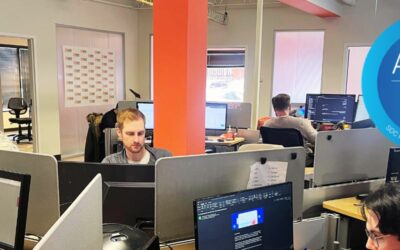Company leaders often think that a cyber attack will never happen to them because their company and its data are of no interest to hackers. The list of companies below shared that point of view. But not anymore because they have made the list of the biggest ransomware attacks of 2019. A ransomware attack will most likely, at some point, happen to you. The more you know the better you can prepare for and prevent the worst from happening.
There are only two mistakes one can make along the road to truth;
not going all the way, and not starting.
-Buddha
The Biggest Ransomware Fiascoes Happened to Some of the Nicest People
Let’s not recycle this ransomware incident
Norway-based aluminum provider, Norsk Hydro, was hit by ransomware in March. A single email from a trusted partner was hacked and infected one computer. The hackers used that one computer to gain access to additional rights and logins. Once the hackers had control, they used Norsk Hydro’s own servers to push out the ransomware payload and launch the attack at the set time. That is all it took to take down a multi-national company. The hack affected all 35,000 employees in 40 countries. The estimated cost of the breach was $71 million. To their credit, rather than hide the incident like many other companies, Norsk Hydro responded with transparency to help other companies learn from their experience. Ultimately, Norsk Hydro did not pay the ransom and recovered on their own with the help of a lot of people including Microsoft.
What did you say? I can’t hear you.
Demant, a Danish hearing aid manufacturer, was hit by ransomware at a cost estimated at $95 million to recover. That huge number does not include the nearly $20 million that cyber insurance paid out and ongoing reputation damage. The firm was out of business for many weeks and the residual ripple effects will go on for months/years. No one knows what happened to cause the Ransomware outbreak, but I bet their company management is taking cybersecurity seriously now.
Excuse me, Mr. Councilman.
The hack that took down the city of Baltimore made national headlines and served as a warning to all municipalities. The city chose NOT to pay the hacker’s $76,000 ransom, but instead chose to spend more than $18 million to recover. After Baltimore got hit, ransomware hackers declared open season on cities. In fact, from a list of the top 10 Ransomware hacks, local governments and cites filled 8 out of the 10 spots. New Orleans, 22 Texas towns, several cities in Florida, and New Bedford, Mass. got stung by ransomware attacks in 2019 alone. If you are a local government, you’re a prime target and better take your cybersecurity seriously.
Doctor, I have a toothache.
Manage Service Providers (MSP) have a big target on their backs. MSPs, who manage customers’ IT, hold the keys to all their clients’ IT jewels. Because hackers are lazy and like low hanging fruit, they went after the careless, second-rate MSPs in an attempt to gain access to an array of client systems. Sadly, an MSP that specialized in dental offices was hacked and allowed access to 100 of their clients. It took months and an unimaginable amount of money for those dental offices to recover.
When Ransomware speaks, people listen.
A non-disclosed financial firm with 300 employees and 5 offices was infected on all its servers, all its computers, at all its locations. They were effectively out of business until they recovered or paid the $300,000 ransom. They had no Incident Response Plan and flew blindly through the recovery process. Their Recovery team grew from internal IT to a 3rd party IT consultants to Waident providing guidance and an outside perspective. The recovery took some time, but this organization was able to offset recovery costs through an existing cyber Insurance carrier.
“Fools say that they learn by experience. I prefer to profit by others experience.”
― Otto von Bismarck
If you don’t want to end up on a Biggest Ransomware Attack list, take the first step to prevent a ransomware attack on your organization.
“Big” is in the eye of the beholder. Magnitude is measured in terms of recovery costs and time relative to your organization’s ability to absorb the revenue, profit, and reputational hit of an attack. Small and mid-sized companies don’t carry a lot of fat. I hope by this point you understand the threat that Ransomware represents to your enterprise, your employee productivity, your most important data, and your reputation.
Hackers are opportunistic, cheap, and look for easy targets. They use a host of free tools to easily identify new targets to hit (i.e., companies that do not have even basic security in place). Don’t become low hanging fruit! Put together an Incident Response Plan. Practice sound IT hygiene. And, before working with an MSP, ask a lot of questions about their own internal security practices and policies so you don’t suffer the same fate as the dentist offices.
Want to prepare an even stronger defense against a ransomware attack?
DOWNLOAD our Ransomware Best Practices Checklist and take the simple steps to protect your data, keep your employees productive, and keep your enterprise up and running. The more cybersecurity protection layers you have in place, the harder a target you are and the chances of being hacked are much lower since it will take too much effort.





